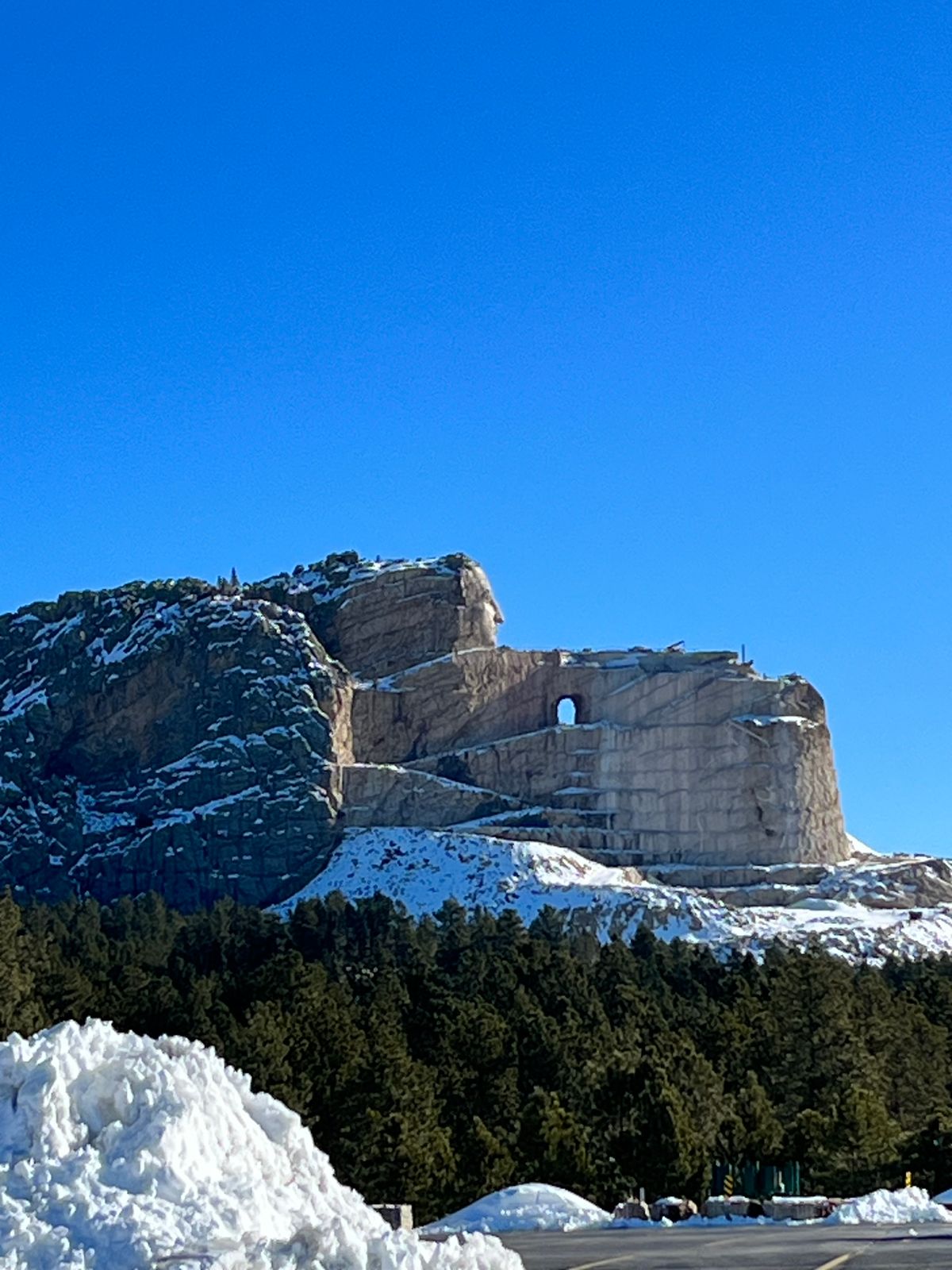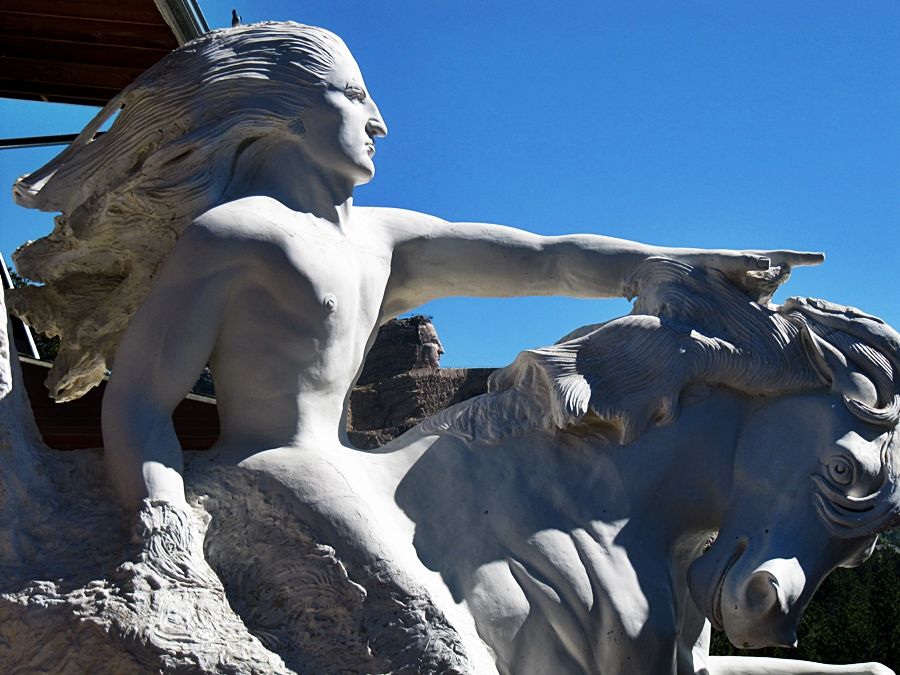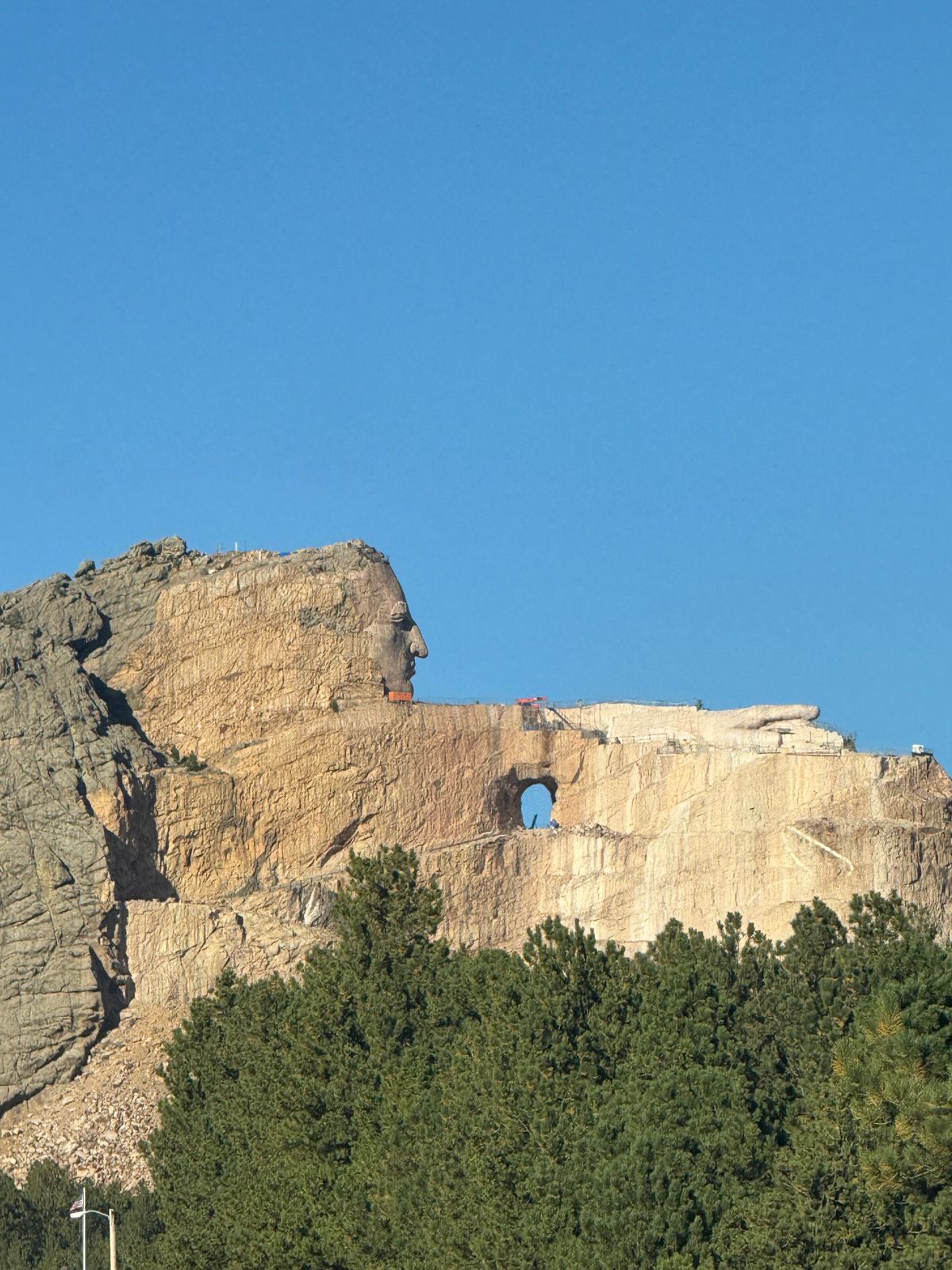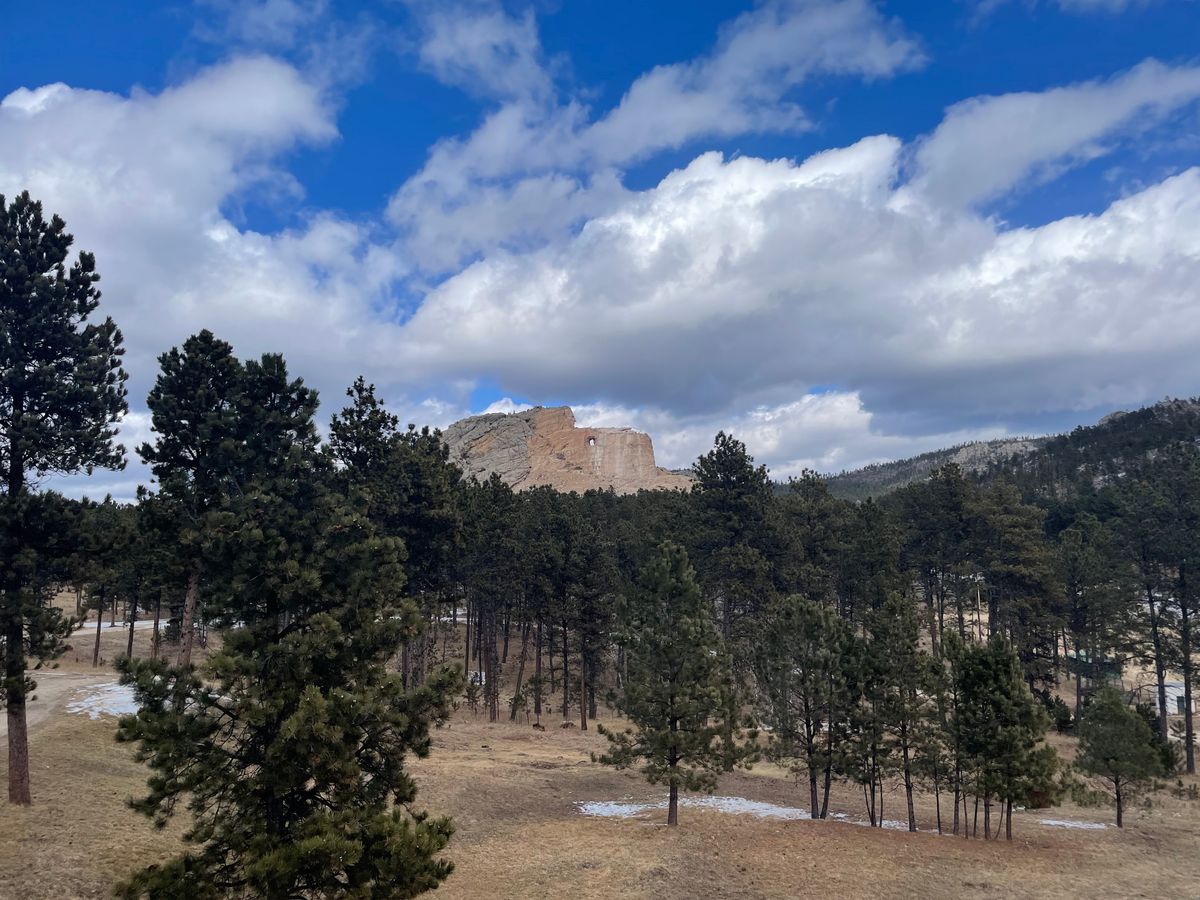About
When the carving of Mount Rushmore began in 1927, the local Lakota Indians objected loudly. The Black Hills of South Dakota, by treaty, belonged to them. But rather than simply protest, Chief Henry Standing Bear wrote to Korczak Ziolkowski, who had assisted in the carving of Mount Rushmore, and asked him to help the local Native American tribes etch their own heroes into rock.
In 1948, Ziolkowski began work on a carved memorial to Crazy Horse, a Lakota war hero who fought and died battling the United States government in the 1870s. The mountain Ziolkowski was given to carve was located a scant eight miles from Mount Rushmore.
Though Ziolkowski passed away in 1982, work continues on the Crazy Horse memorial. The face of the sculpture, a towering 87 feet, was dedicated in 1998. When completed, the sculpture will stand 641 feet long and 563 feet tall making it the world's largest sculpture by far. For a size comparison, the head of Crazy Horse alone is 27 feet taller than the six story heads of Mount Rushmore. In fact, if you were to stack all the heads of Mount Rushmore on top of one another, the tower of presidential noggins still wouldn't reach half the height of Crazy Horse. The horse head alone could easily fit two of Lincoln's inside of it.
Work continues 60 years after Ziolkowski begun and is currently progressing on the horse's head.
Ironically today almost all the local Native American tribes do not support the monument. In the words of Lakota medicine man Lame Deer, "The whole idea of making a beautiful wild mountain into a statue of him is a pollution of the landscape. It is against the spirit of Crazy Horse."
The Indian Museum of North America and the Native American Cultural Center are located nearby, with a large collection of objects that tell the story of the culture, tradition, and heritage of Native Americans. The museum display the flags of all the Native American tribes, as well as a collection of paintings by Andrew Standing Soldier and Hobart Keith, and photographs from the 19th century. The museum also hosts many cultural activities and offers hands-on experiences to its visitors in the Education and Cultural Center.
Related Tags
Know Before You Go
It cost $30 per car to enter. For a tax-deductible donation of $125 per person, you can take a private tour to the top and be face-to-face with Crazy Horse.
Community Contributors
Published
July 22, 2010



































































